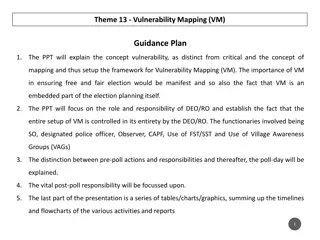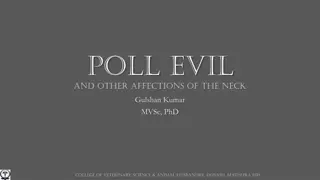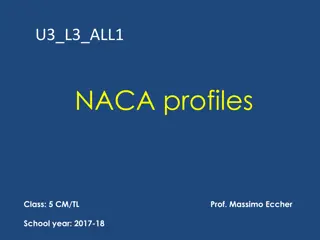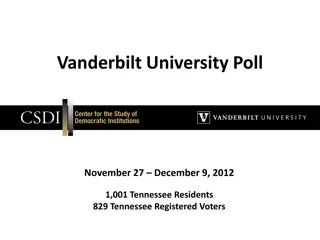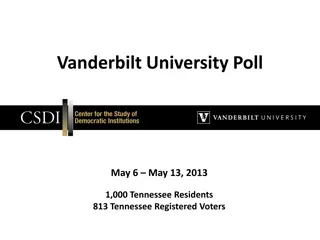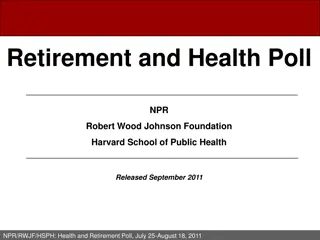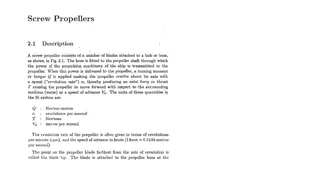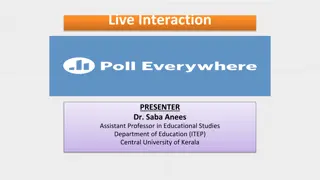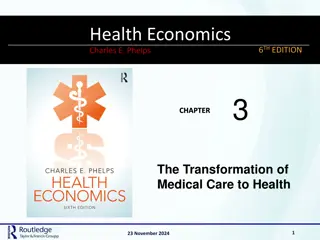
Developing Standards for Analyzing Productivity Claims in Construction
Explore the importance of standardization in quantifying productivity claims and its impact on construction auditors. Learn about drafting and organizing construction contract documents effectively. Discover the benefits of following CSI practice recommendations and reference guides for improved communication and auditing.
Download Presentation

Please find below an Image/Link to download the presentation.
The content on the website is provided AS IS for your information and personal use only. It may not be sold, licensed, or shared on other websites without obtaining consent from the author. If you encounter any issues during the download, it is possible that the publisher has removed the file from their server.
You are allowed to download the files provided on this website for personal or commercial use, subject to the condition that they are used lawfully. All files are the property of their respective owners.
The content on the website is provided AS IS for your information and personal use only. It may not be sold, licensed, or shared on other websites without obtaining consent from the author.
E N D
Presentation Transcript
Developing Standards For Quantifying and Analyzing Productivity Claims And The Impact On Construction Auditors 2021 NACA Virtual Conference DECEMBER 17, 2021
Initial and Introductory Information on the Drafting and Organization of Construction Contract Documents John M. Sier 313-965-2915 John.sier @kitch.com
Question #1 Have you used the Construction Specifications Institute Manual of Practice [MOP] or Project Delivery Resource Guide [PDRG] relative to contract organization? Yes No
Drafting/Organization Generally follow the CSI practice recommendations: Say it once assist in coordination Say it clearly Say it concisely Say it correctly Say it completely Say it in the correct location Typically review contract from back [most recent Change Orders] to front [original] Addenda pre-contract execution Amendment post-contract execution
Reference Guide Not all construction documents follow the CSI recommendations However, the recommendations can come in handy for locating certain issues either in drafting or reviewing AIA 512/EJCDC N-122 [2012] Uniform Location of Subject Matter Information in Construction Documents topics indexed to preferred/suggested location in documents Advertisement for bid/Instructions to Bidders Bid/Proposal Agreement [business/commercial terms] General Conditions [field/management] Supplementary Conditions [site/project specific requirements] Division 01, General Requirements [procedures and submittals] Divisions 02-49, Specifications https://www.aiacontracts.org/resources/70021-aia-document-a521- 2012-and-ejcdc-document-n-122-2012-edition--?tab=library
Standardization Can Be Good Assist with contract drafting and interpretation Assist with performance Assist with communication Assist with auditing Unfortunately, not as common as might be hoped Which can contribute to miscommunications and claims
ASCE/ANSI/CI Standard Permissive/advisory and not mandatory Committee members include several prominent consultants William Ibbs, Ph. D. Chair Robert D Onofrio, P.E. C.Eng Paul Stynchcomb James Adrian, Ph.D. William Schwartzkopf, P.E. William Zollinger 18 other members
Question #2 Have you encountered a claim involving lost productivity? Yes No
Divisions Introduction and Purpose Productivity Basics Identifying Productivity Loss Establishing Recoverable Loss of Productivity Quantifying Productivity Loss Avoiding Productivity Loss Appendix Hypothetical project with examples Bibliography containing list of publications on productivity measures and methodologies
Overview Written from perspective of claimant/contractor/plaintiff Emphasizes the importance of collecting contemporaneous data Standards are guidelines Methodology depends on context Not one-size-fits-all Attempt to develop common taxonomy Lifecycle of productivity data Collection Storage Verification Analysis
Definitions Establishes common definitions for terms Production measure of output only Productivity output per measure of input Productivity Index ratio of actual v. planned Earned Value measure percent complete Establishes tiers and criteria for methodologies Measured Mile Academic and Industry Productivity Studies [surveys] Modified Total Cost Total Cost
Data Collection Accurate information critical Verifiable and contemporaneous validated regularly Identifiable work segregated by cost account Basis of measurement documented Changed work tracked separately from base contract Create culture valuing data Train people to collect and analyze data Accurately assign planned hours to activity codes documentation Available data will influence methodology to use
Sample Data Collection Form
Identify Productivity Loss Establish and monitor measurement control Consider factors causing Productivity Loss Labor Productivity Reports Planned labor hours from accurate estimate/bid Division of project into definable elements of work Independently and accurately assess progress (units) Charge labor hours contemporaneously Reliable tool/program for calculating productivity Consider accord and satisfaction wording in change order precluding cumulative impact claims forecast productivity loss
Recoverable Loss of Productivity Actual productivity materially different from planned But for causation Logical tie between issue/event and effect Segregate multiple causes Watch for cumulative impacts Isolate productivity loss by issue Notice under contract as required Each project unique expert opinion necessary
Methods of Quantifying Loss Preferred Order explain basis for methodology Measured Mile Compare impacted productivity with unimpacted work Same project [ideally] Quantity/time/area-based Periods representative and adequate sample [10% rule of thumb] Occasionally use earned value if productivity data not available Productivity Factors Studies and Modified Total Cost Academic and Industry studies [MCAA/NECA surveys] Modified Total Cost Not possible to use Measured Mile Contractor s Bid was reasonable Contractor s incurred costs are reasonable Adjusted to address contractor-caused problems Total Cost no contractor-caused issues Convert hours to dollars and time Consider exchange rates, escalation and burden
Question #3 Have you encountered a productivity calculation using the following methodologies? Measured Mile Industry Surveys [MCA] Modified Total Cost Total Cost
Methodology Preference Curve
Tiered Approach to Analysis
Avoiding Productivity Loss Data Collection contemporaneous and validated Monitoring and Reporting Initiate accounting procedures to capture and quantify Mitigation of Productivity Challenges Planning and Scheduling Adequate Supervision Change Management Avoid/Limit Productivity Inhibitors [waiting, turnover, accidents, etc.] Additional manpower rather than extended overtime 3-4 weeks of continuous OT show reduced productivity
Ultimate Standard Calculations must be to a reasonable degree of certainty and not speculative Horseshoes and hand grenades Science -v- Art -v- Velvet Elvis
Documentation is Key Role of auditors in validating reliable information Assess accuracy of contractor's bid/estimate Assess adequacy of time period or sample of measured work Review labor hours allocated to particular work item Segregate Change Order work [language of CO] Identify cause and effect
Questions John M. Sier Kitch Drutchas Wagner Valitutti & Sherbrook One Woodward Avenue, Suite 2400 Detroit, MI 48226-5485 313.965.2915 www.kitch.com john.sier@kitch.com

